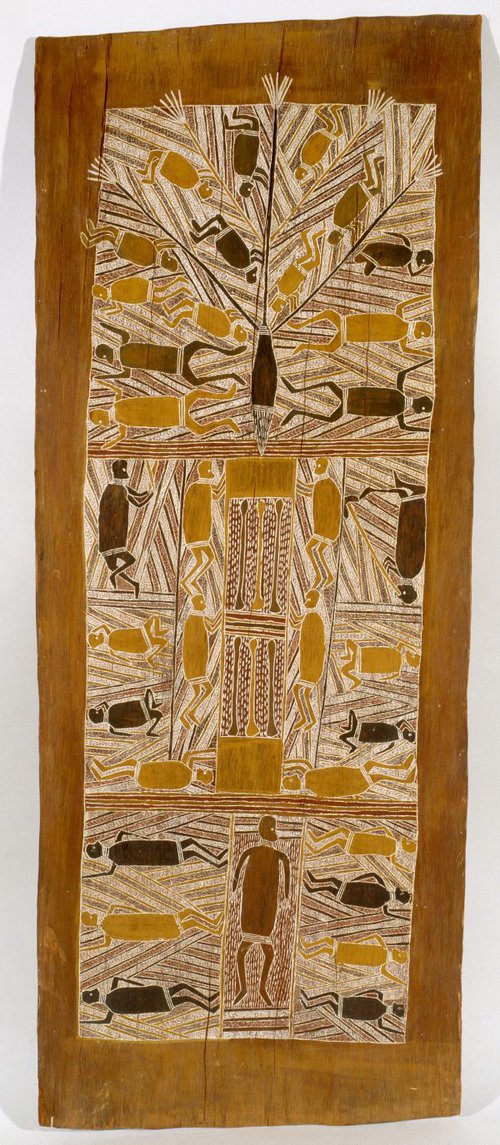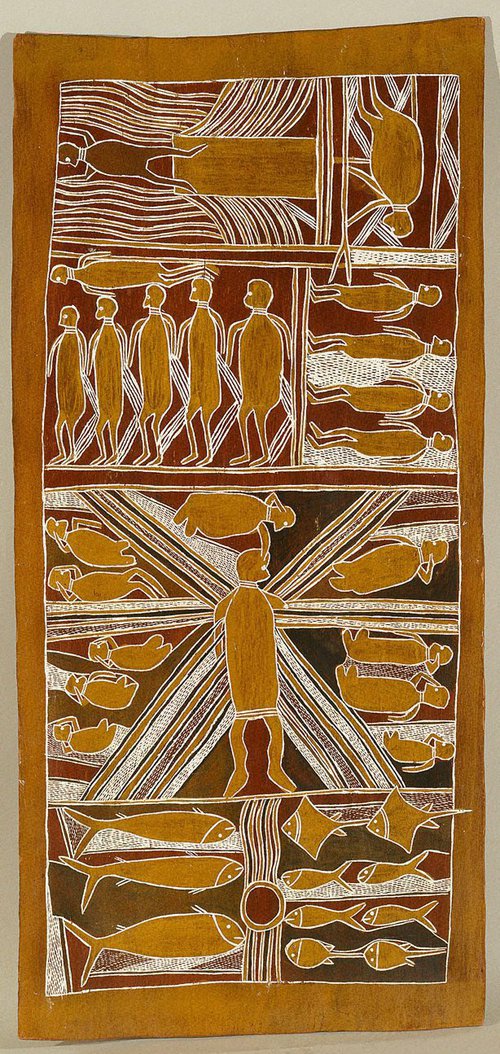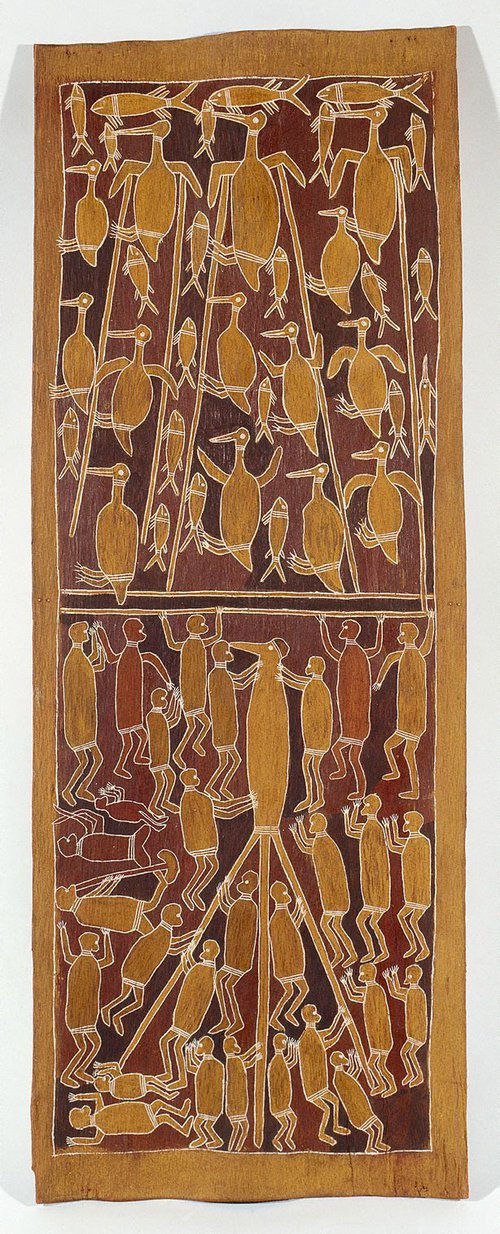Title
Djan'kawu creation story, from the series Djan'kawu story
1959
Artist
-
Details
- Other Titles
- Djang'kawu myth no. 2
Djannggawo myth no. 2
Djanggawul myth no. 2
Djanggawull myth no. 2
Djang'kawu story no. 2 - Place where the work was made
-
Yirrkala
→
North-east Arnhem Land
→
Northern Territory
→
Australia
- Date
- 1959
- Media category
- Bark painting
- Materials used
- natural pigments on bark
- Dimensions
- 190.5 x 63.5 cm
- Signature & date
Not signed. Not dated.
- Credit
- Gift of Dr Stuart Scougall 1959
- Location
- South Building, ground level, 20th-century galleries
- Accession number
- IA65.1959
- Copyright
- © Mawalan Marika. Licensed by Aboriginal Artists Agency Ltd
- Artist information
-
Mawalan Marika
Works in the collection
- Share
-
-
About
Mawalan Marika was a great law man with extensive sacred knowledge. He led key parts of the Djang’kawu and Wawilak ceremonies, which are the basis for most of his paintings. Marika was one of the first artists at Yirrkala to begin painting barks for sale, and a passionate advocate for his people’s cultural and land rights.
The Djang’kawu, a man and two sisters, are the primary ancestral creator beings for the Dhuwa moiety of central and north eastern Arnhem Land. Yalangbara, where the Djang’kawu landed after their canoe journey from Burralku (an island to the east), is the most important location painted by Marika. The Marika family consider themselves to be Mayarr Mayarr – the children of the Djang’kawu. In a series of five large bark paintings, Marika depicted the Djang’kawu journey by canoe across the sea, and their activities after they landed at Yalangbara. These paintings are considered to be the most comprehensive visual narratives of the Rirratjingu ancestral song cycle in existence.
This bark depicts, at bottom: The goanna (djanda) is depicted in the centre while on either side are shown male and female goannas on the sandhills at Yalangbara (Port Bradshaw). Djanda is represented lying on a large rock. The semi-circles are goanna holes while the zig-zag lines are the tracks of the goanna going into holes in the rock.
lower left: This section shows goanna tracks through the sandhills.
lower right: The wild turkey is depicted eating wild berries and nuts.
upper left: Flying foxes are depicted in a gadmura tree.
upper right: The goanna (djanda) is shown with a 'singing tree' (casuarina).
top left: A male and two female goannas play in the sand.
top right: The camp of Djan'kawu and his sisters. He calls out names of the related clan language groups of the area. They are depicted by the squares. Black inner corner Rirratjingu, black upper square Marrakulu, top red Djarlwark, lower square Ngaymil.
The cross-hatching shows aspects of the environment such as sandhills, sand falling away as the goanna travels across the sandhill, goanna tracks, the wild turkey nest, etc.
© Information provided by the artist, and Australian art department, AGNSW
-
Places
Where the work was made
Yirrkala
-
Exhibition history
Shown in 5 exhibitions
Gamarada, Art Gallery of New South Wales, Sydney, 15 Nov 1996–16 Feb 1997
Australian icons: twenty artists from the collection, Art Gallery of New South Wales, Sydney, 04 Aug 2000–03 Dec 2000
Yalangbara, Art Gallery of New South Wales, Sydney, 11 May 2006–23 Jul 2006
Yalangbara: art of the Djang'kawu, National Museum of Australia, Canberra, Canberra, 09 Dec 2010–25 Sep 2011
Yalangbara: art of the Djang'kawu, Museum and Art Galleries of the Northern Territory, Darwin, 26 Nov 2011–17 Jun 2012
Yalangbara: art of the Djang'kawu, Western Australian Museum, Perth, 17 Nov 2012–24 Feb 2013
20th-Century galleries, ground level (rehang), Art Gallery of New South Wales, Sydney, 20 Aug 2022–2023
-
Bibliography
Referenced in 2 publications
-
Margie West (Editor), Yalangbara: art of the Djang'kawu, Darwin, 2008, 46 (colour illus.).
-
Judith White (Editor), Look, 'End of a dream ... almost!', pg. 13, Melbourne, Nov 2000, 13 (colour illus.).
-




